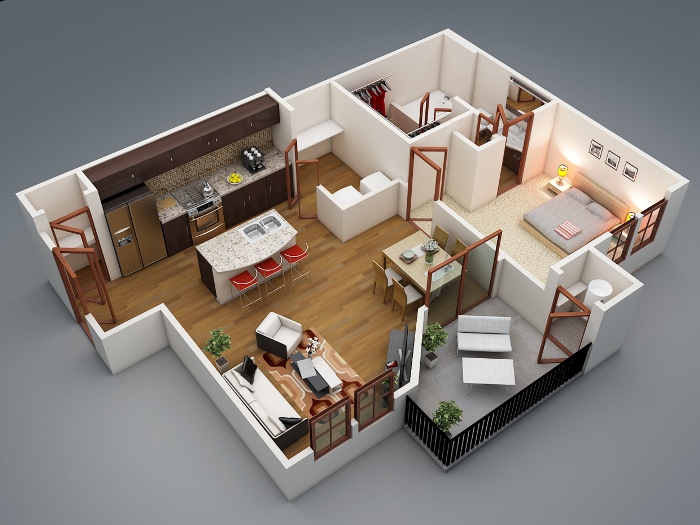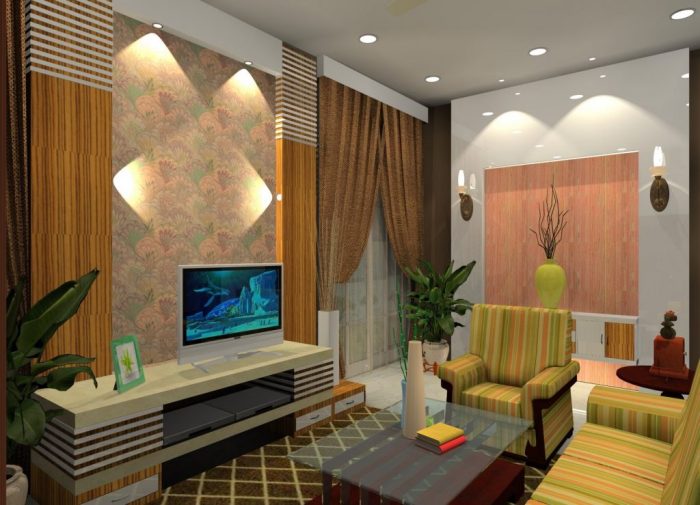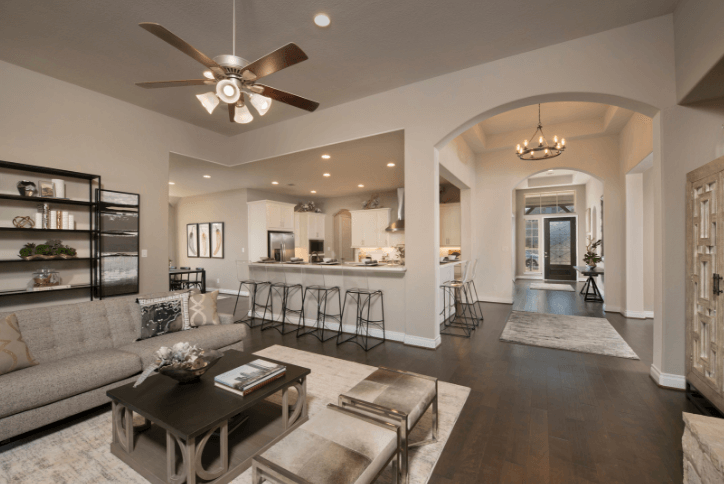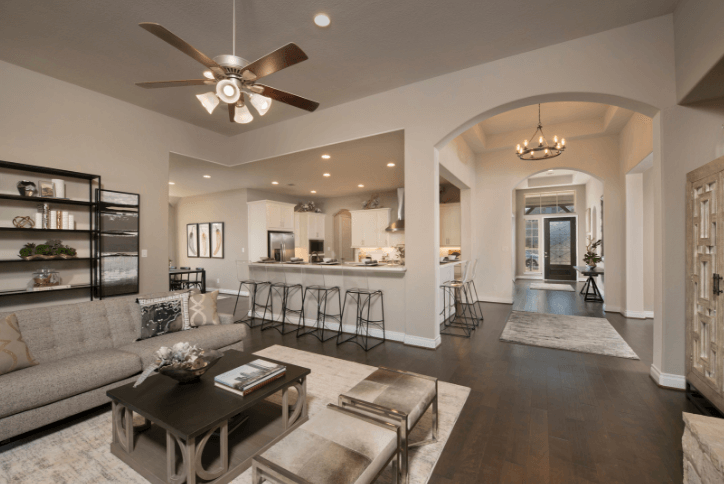1 Story House Interior Design: Creating a Comfortable and Stylish Home, is a comprehensive guide to transforming your single-story home into a haven of style and functionality. From maximizing space and creating an open-concept flow to designing inviting bedrooms and bathrooms, we delve into every aspect of interior design for this popular home style.
Whether you’re looking for inspiration for a new build or seeking to refresh your existing home, this guide offers practical tips, design ideas, and expert advice to help you create a space that perfectly reflects your lifestyle and preferences.
Single-story homes offer a unique set of design challenges and opportunities. The absence of stairs provides an open and accessible layout, making it ideal for families with young children or individuals seeking easy navigation. However, maximizing space and creating a sense of visual interest within a single level requires thoughtful planning and design.
This guide explores various techniques for optimizing space, incorporating clever storage solutions, and utilizing open-concept designs to create a sense of spaciousness and visual appeal. We also delve into specific design considerations for key areas of the home, including the kitchen, living room, bedrooms, and bathrooms, providing practical tips and inspiring ideas to help you create a beautiful and functional space that you’ll love to call home.
Bathroom Design for a Single-Story Home

Designing a bathroom for a single-story home presents unique opportunities to create a space that is both stylish and functional. This is especially important for homeowners who are considering accessibility for aging in place or for individuals with mobility challenges.
Accessibility Considerations
Accessibility in bathroom design is crucial for single-story homes, ensuring ease of use for people of all ages and abilities. Key considerations include:
- Walk-in Showers:Eliminate the need for stepping over a curb, making entry and exit easier.
- Grab Bars:Strategically placed grab bars near the toilet, shower, and bathtub provide stability and support.
- Adjustable Showerheads:Allow users to customize the shower height and spray pattern for optimal comfort.
- Non-Slip Flooring:Prevents accidents by providing a secure surface for walking and standing.
- Wide Doorways:Allow for easy wheelchair access and maneuverability.
Bathroom Layout Options
Different bathroom layouts cater to various needs and preferences. Here’s a comparison of popular options:
- Single-Vanity Layout:This layout features a single vanity with a sink, toilet, and shower or tub. It is ideal for smaller bathrooms and offers a simple and efficient design.
- Double-Vanity Layout:This layout provides ample counter space and storage with two sinks, a toilet, and a shower or tub. It’s perfect for larger bathrooms and families who prefer separate vanities.
- Separate Shower and Tub Layout:This layout provides a dedicated shower space and a separate bathtub, offering flexibility and choice for bathing preferences. It’s suitable for larger bathrooms and those who value both showering and soaking experiences.
Bathroom Design Inspiration, 1 story house interior design
Imagine a bathroom with a calming and inviting atmosphere. A large walk-in shower with a rain showerhead and a bench for sitting or resting. The walls are clad in natural stone tiles, providing a touch of elegance and durability.
The vanity is made of solid wood with a large countertop and plenty of storage space. A large mirror above the vanity reflects natural light from a nearby window, creating a sense of spaciousness. The lighting is soft and diffused, creating a relaxing ambiance.
The bathroom features a soothing color palette, with neutral tones and accents of calming blue and green. This bathroom is not only functional but also aesthetically pleasing, creating a sanctuary for relaxation and rejuvenation.
Lighting Design for a Single-Story Home

Proper lighting plays a crucial role in enhancing the ambiance, functionality, and aesthetics of any home, especially in a single-story design where spaces flow seamlessly. A well-designed lighting plan maximizes natural light, complements the home’s architecture, and caters to the unique needs of each area.
Types of Lighting Fixtures
Lighting fixtures are categorized based on their function and purpose. The choice of fixture depends on the specific area and its intended use.
- Ambient Lighting:Provides overall illumination and sets the mood for the space. Examples include chandeliers, pendant lights, and recessed lighting. Ambient lighting is often used in living rooms, bedrooms, and dining areas.
- Task Lighting:Designed for specific activities that require focused light. Examples include desk lamps, under-cabinet lights, and reading lamps. Task lighting is essential in areas like kitchens, home offices, and reading nooks.
- Accent Lighting:Highlights architectural features, artwork, or decorative elements. Examples include track lighting, spotlights, and wall sconces. Accent lighting adds depth and visual interest to the space, enhancing its aesthetic appeal.
Lighting Plan for a Single-Story Home
A comprehensive lighting plan for a single-story home incorporates a blend of natural light, ambient light, task lighting, and accent lighting.
- Natural Light:Maximize natural light by using large windows, skylights, and glass doors. This creates a bright and airy atmosphere, reducing the need for artificial light during the day. In areas where natural light is limited, consider using light-colored walls and reflective surfaces to bounce light around the space.
- Ambient Lighting:Use a combination of recessed lighting and pendant lights to provide overall illumination in the living room, dining area, and kitchen. In bedrooms, consider a chandelier or pendant light for a warm and inviting ambiance. Recessed lighting can also be used in hallways and corridors to create a sense of continuity.
- Task Lighting:Install under-cabinet lights in the kitchen for food preparation and cleaning. Use desk lamps or reading lamps in home offices and reading nooks to provide focused illumination. Consider using dimmable task lighting for flexibility in adjusting light levels.
- Accent Lighting:Highlight architectural features, such as crown molding or beams, with track lighting or spotlights. Use wall sconces to illuminate artwork or decorative elements, adding visual interest and depth to the space. Consider using LED accent lighting, as they are energy-efficient and long-lasting.
Decorating a Single-Story Home: 1 Story House Interior Design

Decorating a single-story home can be a rewarding experience, allowing you to create a cohesive and inviting atmosphere throughout. From choosing the right color palette to incorporating unique textures and patterns, there are many ways to make your home truly your own.
Creating a Cohesive Atmosphere
A cohesive atmosphere is achieved through a unified design approach that flows seamlessly from one room to another. Here are some key tips:
- Establish a color palette:Select a limited number of colors that complement each other and reflect your desired style. This palette should be used throughout the home, with variations in intensity and accents.
- Choose a unifying theme:A theme can be based on a specific style, color, or even a personal interest. This theme will provide a common thread that ties the different areas of your home together.
- Consider the flow of traffic:Pay attention to the natural flow of movement within your home and ensure furniture placement and decor don’t obstruct walkways or create a sense of clutter.
- Create a focal point:Each room should have a focal point, which could be a fireplace, a piece of artwork, or a statement piece of furniture. This will draw the eye and create visual interest.
Utilizing Color, Texture, and Pattern
Color, texture, and pattern are essential elements in creating a visually appealing interior. Here’s how to effectively incorporate them:
- Color:Choose a base color for walls and furniture, and then add accent colors through artwork, rugs, and throw pillows. Consider the mood you want to create: cool colors like blues and greens are calming, while warm colors like reds and yellows are energetic.
- Texture:Texture adds depth and dimension to a space. Use a variety of textures in your furniture, fabrics, and accessories, such as velvet, linen, wood, or metal. For example, a smooth leather sofa can be paired with a textured throw blanket for a cozy and inviting feel.
- Pattern:Patterns can be used to add visual interest and personality. However, use them strategically to avoid overwhelming the space. For example, a patterned rug can be a focal point in a room with solid-colored walls and furniture.
Popular Decorating Styles for Single-Story Homes
There are various decorating styles that can be successfully implemented in single-story homes. Here are a few popular examples:
- Modern:This style emphasizes clean lines, minimalist furniture, and a neutral color palette. Modern homes often feature large windows, open floor plans, and a focus on functionality.
- Traditional:Traditional style incorporates classic elements like ornate furniture, rich fabrics, and warm colors. It creates a sense of timeless elegance and comfort.
- Rustic:Rustic style embraces natural elements like wood, stone, and leather. It often features distressed furniture, exposed beams, and a cozy, inviting atmosphere.
- Farmhouse:Farmhouse style combines rustic elements with a touch of vintage charm. It typically features light and airy colors, natural materials, and a focus on simplicity and comfort.
Ultimate Conclusion
Creating a beautiful and functional single-story home is an exciting journey that involves careful planning, creative inspiration, and a touch of personal style. By incorporating the principles Artikeld in this guide, you can transform your home into a haven of comfort, style, and functionality.
Whether you embrace a minimalist aesthetic, a cozy farmhouse style, or a modern and sleek design, the key is to create a space that reflects your unique personality and meets the needs of your family. With a little imagination and the right guidance, you can create a single-story home that is both aesthetically pleasing and a true reflection of your lifestyle.
Questions and Answers
What are the biggest challenges of designing a single-story home?
Maximizing space and creating visual interest within a single level can be challenging. It’s important to consider the flow of the home and ensure that each room feels distinct and functional.
How can I make my single-story home feel more spacious?
Utilize open-concept designs, maximize natural light, and use light colors and furniture to create a sense of spaciousness. Clever storage solutions can also help to declutter and maximize usable space.
What are some popular design styles for single-story homes?
Popular styles include modern, contemporary, farmhouse, and traditional. The best style for your home will depend on your personal preferences and the overall aesthetic of your neighborhood.
What are some tips for decorating a single-story home?
Consider using a cohesive color palette, incorporating natural elements, and adding personal touches to create a welcoming and inviting atmosphere.
